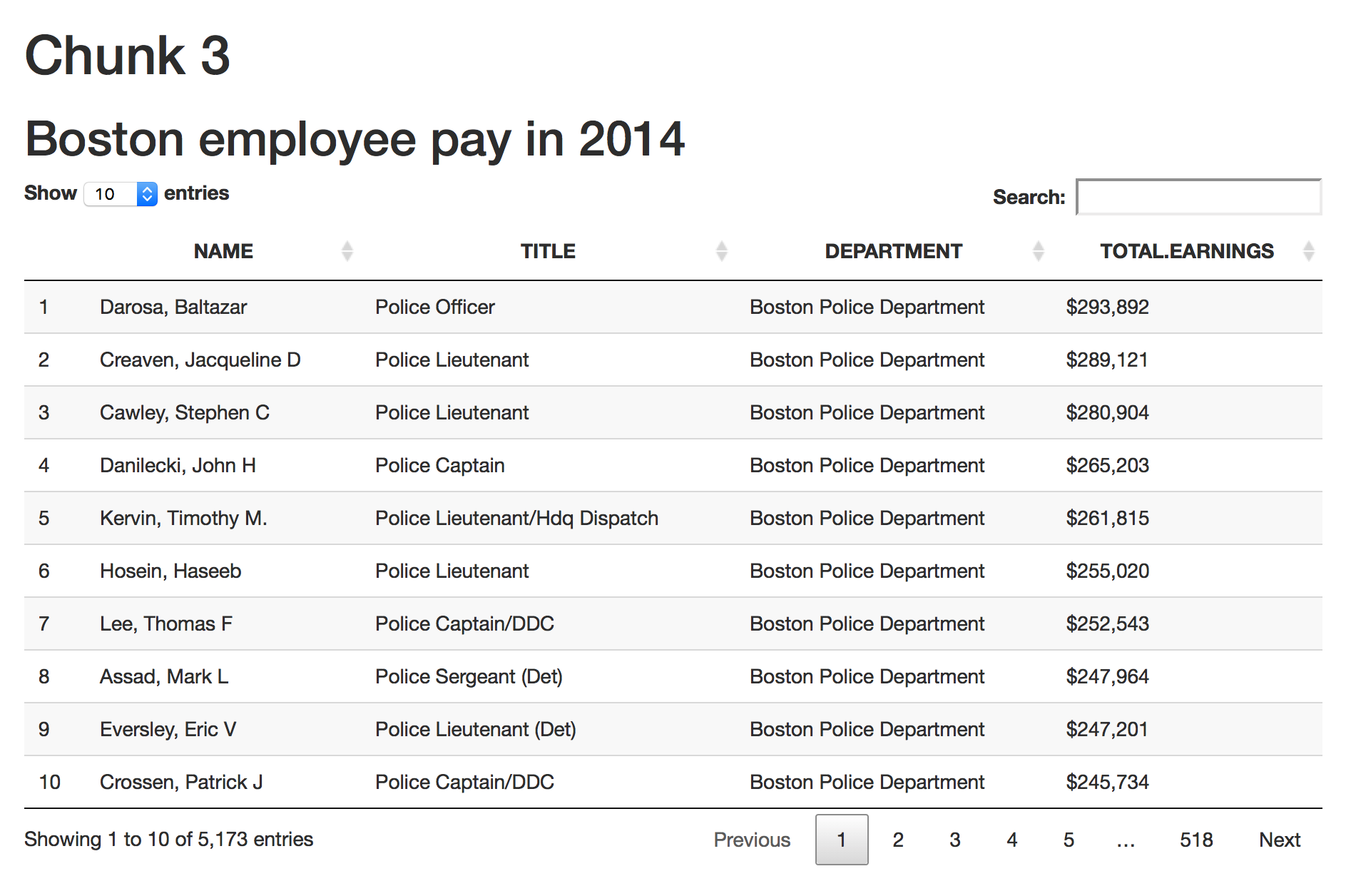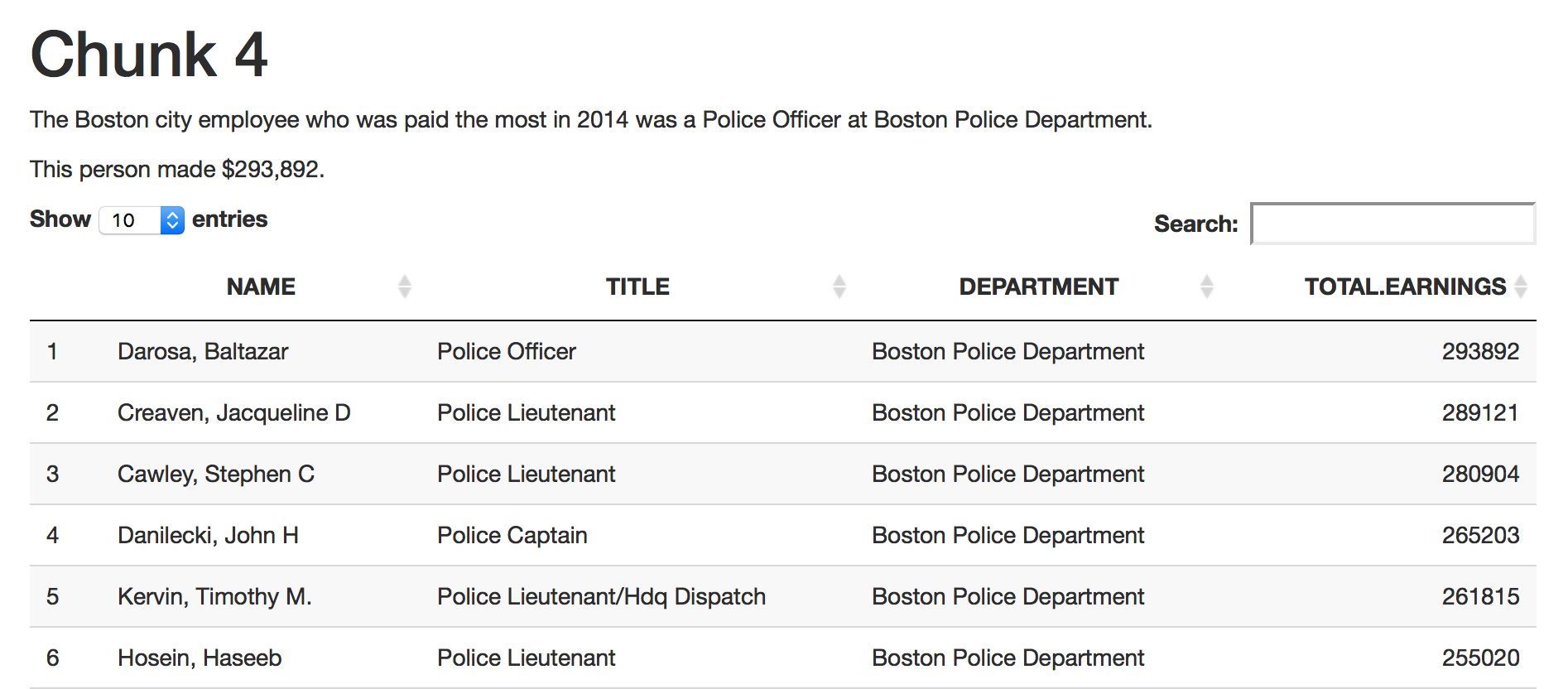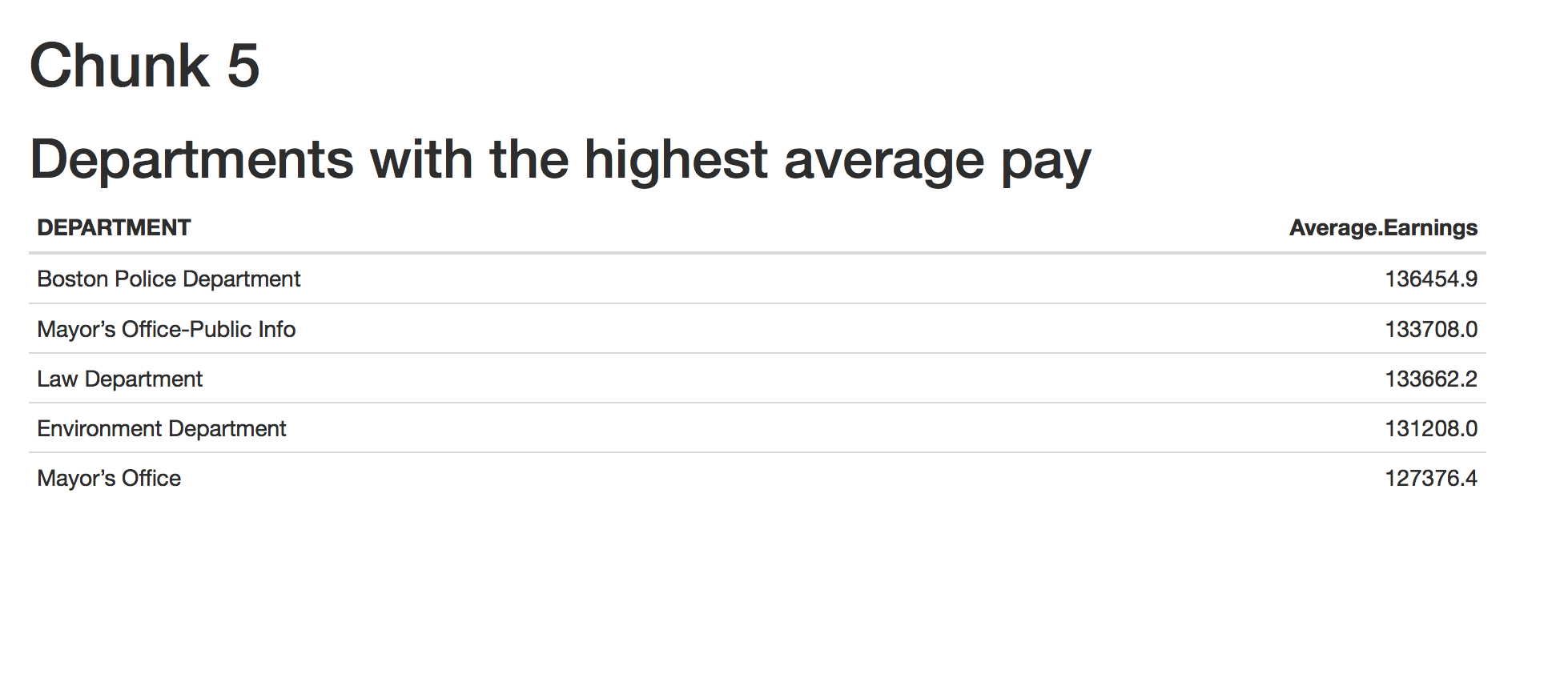More R Markdown
Let’s create some R Markdown files.
Make sure your working directory is set.
If you’re not working with the learn-chapter-6-master folder you downloaded with usethis, download your files to a folder called data.
If you get lost, the .Rmd files can be found in the lesson repo.
We’ll start out by generating a report with Boston city payroll data.
Datatables
- Create a new R Markdown file and call it Chunk 1.
- Leave author blank for these exercises
The top of your file (currently called Untitled 1) should look like this:
---
title: "Chunk 1"
output: html_document
---and then that will be followed by the dummy code.
Delete everything beneath the YAML code.
Replace it with this code:
Save the file as 01_chunk.Rmd and click the knit button.
Note that you need to save this in learn-chapter-6-master not (as you might have gotten into the habit of doing learn-chapter-6-master/more_rmarkdown

Yikes, okay, that’s way too much.
Hide warnings, messages
We can hide those console messages adding warning=F and message=F by the R code chunk labels.
Create a new R Markdown file and call it Chunk 2.
Type the code in below.
The new code can be found on lines 6 and 16.
Save the file as 02_chunk.Rmd and click the knit button.

Now that’s much more readable and gets to the data quicker.
Hide code
If the person you’re sharing this with has no interest in the code and only the quick results, use echo=F to hide the chunk of code and just display the output. It’s on line 8.
We’ll also narrow down the variables selected so the table isn’t way too wide.
Create a new R Markdown file and call it Chunk 3.
Type the code in below.
The new code can be found on 8 and 17.
Save the file as 03_chunk.Rmd and click the knit button.

Inline R code
Embed lines of R code within the markdown narrative with

Create a new R Markdown file and call it Chunk 4.
Type the code in below.
The new code can be found on line 29 and 31.
Save the file as 04_chunk.Rmd and click the knit button.

This type of self-generating analysis is important because if you get the next year of payroll data, running this report will sub in the new city employee who makes the most money automatically.
Pretty tables
Make pretty tables with the knitr package and the kable() function.
Create a new R Markdown file and call it Chunk 5.
Type the code in below.
The new code can be found all the way down on line 60 and 61.
Save the file as 05_chunk.Rmd and click the knit button.

Change theme and style
Change the appearance and style of the HTML document by changing the theme up top.
Options from the Bootswatch theme library includes:
defaultceruleanjournalcosmo
highlights (for the code syntax)
tangopygmentskate
Create a new R Markdown file and call it Chunk 6.
Type the code in below.
The new code is at the top in the YAML section.
Save the file as 06_chunk.Rmd and click the knit button.

Table of contents
Add a floating table of contents by changing html_document to toc: true and toc_float: true.
Create a new R Markdown file and call it Chunk 7.
Type the code in below.
The new code is at the top in the YAML section.
Save the file as 07_chunk.Rmd and click the knit button.

Next steps?
Exporting as a PDF will require LaTex installed first * Get it from latex-project.org or MacTex
Check out all the features of R Markdown at RStudio
Publish your results to Github pages
© Copyright 2018, Andrew Ba Tran